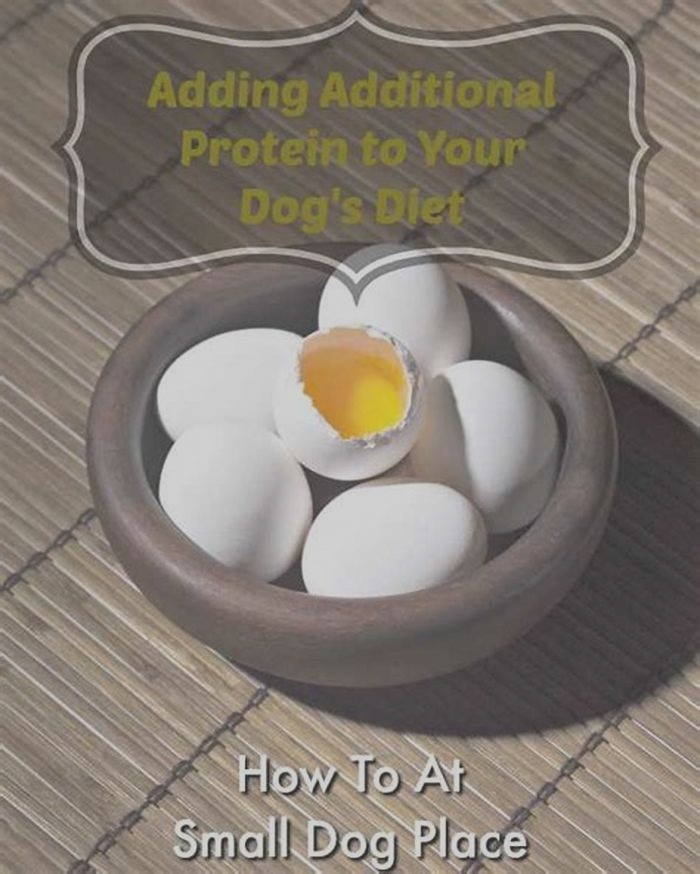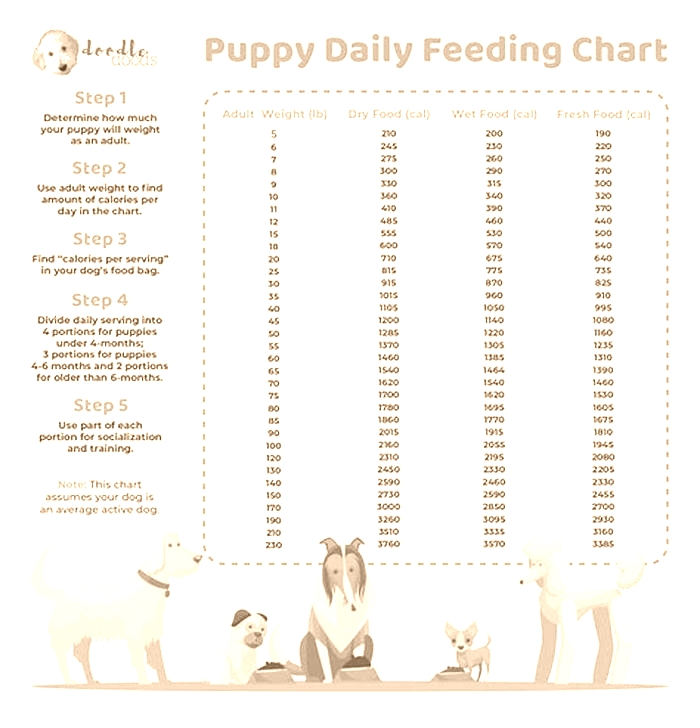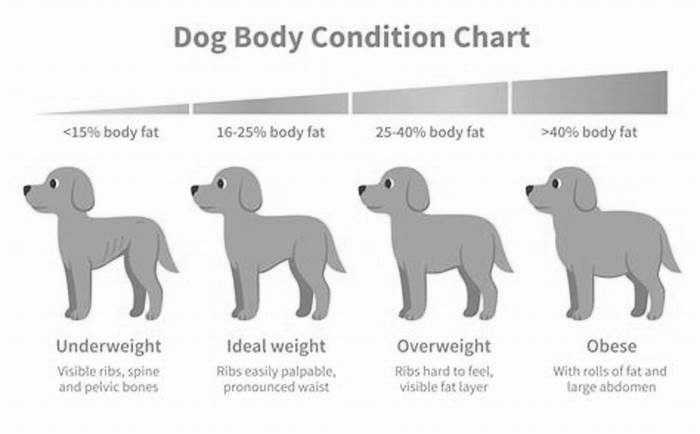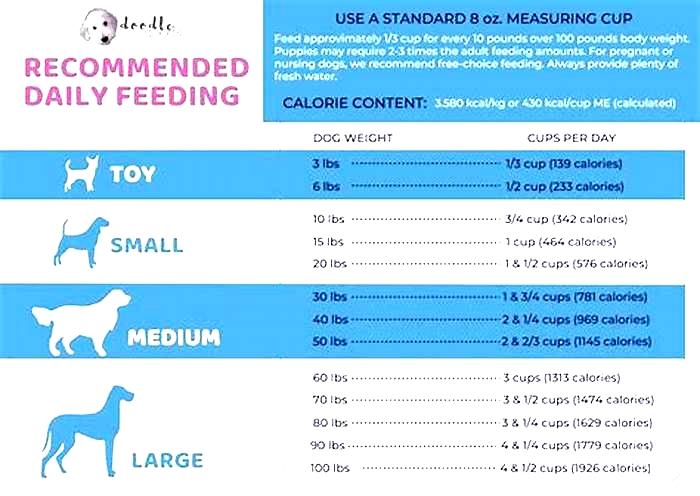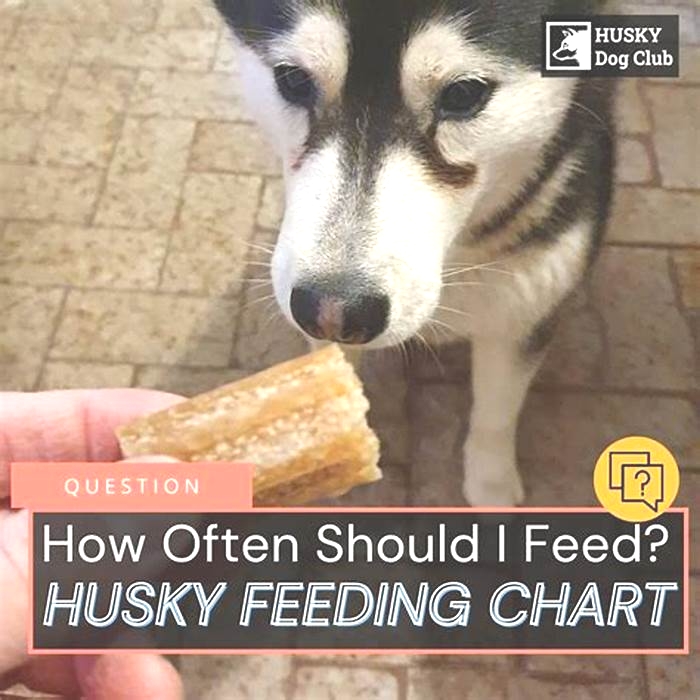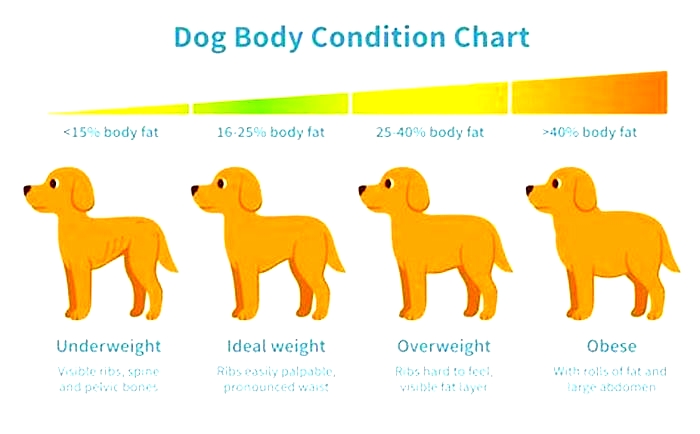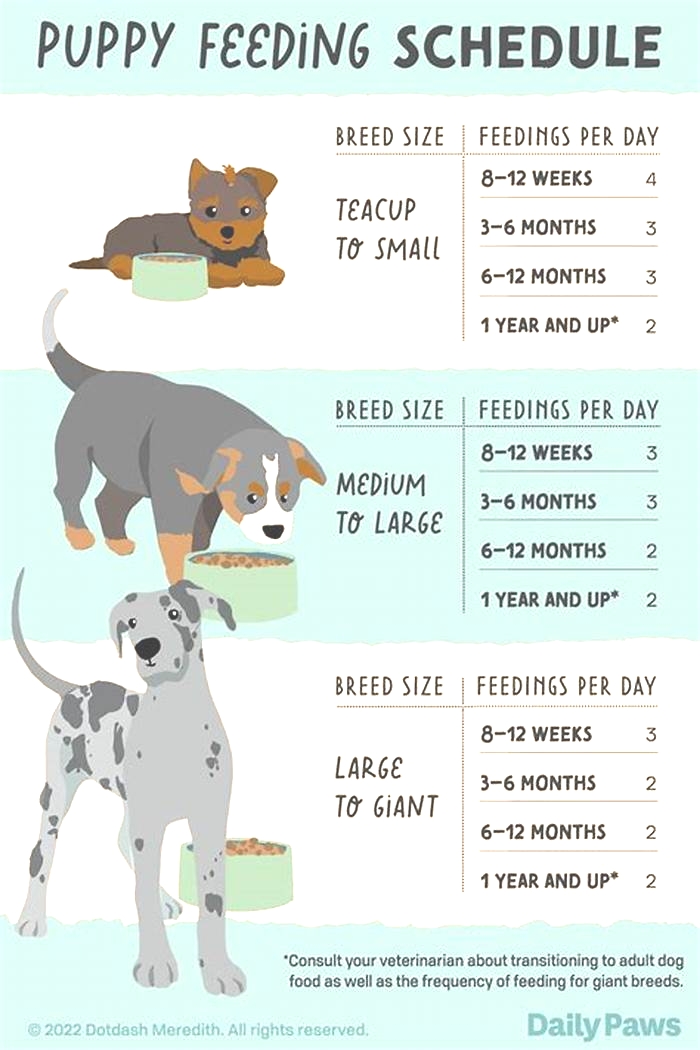How to feed an underweight dog
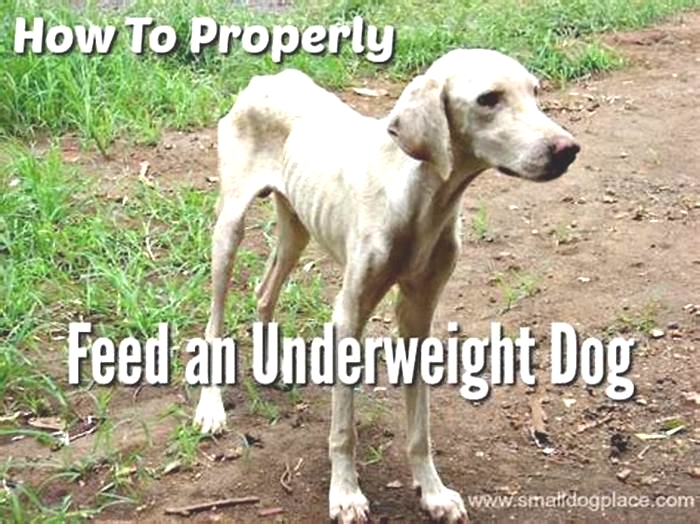
Feeding An Underweight Dog Properly
Feeding An Underweight Dog Properly
Last Updated November 22, 2021
If you have an underweight dog or one that is thin and malnourished, you have a big problem.
It will require a great amount of protein and fat, that should be followed by a balanced diet before your dog can fully recover. Malnourishment is also a condition that is caused by the lack of proper nutrients in a dogs diet.
You should keep in mind that overfeeding your pet is a no no. You should not overfeed your pet in the event that it doesnt eat for a couple of days since its stomach will be more vulnerable to being stretched and could bring serious damage.
Reasons for a Malnourished Dog
There are a lot of reasons why your dog can become too skinny.
When a dog is lost or has been abandoned, the dog might go several days without eating reducing its weight dramatically.
The underweight dog could suffer from some disease or parasites that stop it from eating and being at its optimum weight. One reason that a dog can be very thin is due to some kind of nervous breakdown.
Sometimes when your dog does not eat, its blood sugar levels decreases. The decrease in glucose will affect your dogs body, weakening the function of the brain, kidneys, muscles, and heart.
It is important to always determine the cause of your dogs weight issue before you try anything since they are a handful of medical issues that causes weight loss.
Examples are digestive disorders, intestinal worms, intestinal obstructions and kidney failures are just a few of the problems that could be a reason of your dogs lack of substance.
Let me give you some methods on how to properly feed a malnourished dog.
Methods to Properly Feed an Underweight Dog
The first method is to increase the quantity of food that your dog eats in a day.
For raw feeders, you should add more muscle meat to help put on the pounds, or you might also want to increase the overall percentage that you feed to your dog.
For dogs that are eating a commercial kibble diet, you can add an extra half cup or full cup as your dogs mid-day snack.
For dogs who are on a homemade diet, you should increase the number of carbs and protein.
Another method to note when you feed a malnourished dog is that you should always dish out the meals yourself.
You must never allow your dog to have free access to food and let him/her freely eat for the first few days after having gone without food.
I recommend that you feed your dog only small portions every 6 hours, so that your dogs will eat four times per day.
Remember that when your underweight dogs stomach has gone through a long period of no food, it will dramatically shrink and become more vulnerable to stretching when your starts to eat again.
However, this sensitivity to expansion will just appear in about five days if you just follow the right feeding method.
Also, when you feed a malnourished dog, you should never give it one large meal that will last the whole day since this could be very harmful and dangerous to them.
Another option is you can add one whole raw egg to your dogs food bowl, this large amount of protein will ensure to help pack on some weight on your dogs weight.
CAUTION ABOUT RAW EGGS:In healthy dogs, too many raw eggs can lead to a biotin (vitamin B7) deficiency which is potentially serious. The potential risk would be far worse for a dog who is already malnourished. Cooked eggs, however, are safe.
You can also include fruits and veggies like pumpkin, sweet potato, apples, green beans and raw green tripe on your dogs food bowl.
Another option to consider is the amount of calories in the food that your dog eats during his delicate condition.
The calories that should be consumed by your dog should be the same as what dogs eat under normal circumstances.
You should also make sure that the dog will always have free access to water for them to stay well hydrated. Dehydration in dogs is very serious. Consider 15 percent loss of water could be fatal to any dog.
Finally, providing healthy treats and snacks for your dogs is an excellent way to add extra calories to their diet.
But make sure you do not go overboard with the treats since that could be an easy way to jump to the other side of the weight spectrum.
I would recommend feeding your dogs with high-quality food that has an average fat content of at least 18 percent and between 25 and 30 percent of protein. For a dog to gain weight, it needs to be fed with a large amount of fat.
About Janice (author and voice behind this site)
Having lived with dogs and cats most of her life, Janice served as a veterinary technician for ten years in Maryland and twelve years as a Shih Tzu dog breeder in Ohio.
Her education includes undergraduate degrees in Psychology with a minor in biology, Early Childhood Education, and Nursing, and a master's in Mental Health Counseling.
She is a lifelong learner, a dog lover, and passionate about the welfare of animals. Her favorite breed for over 50 years has been the Shih Tzu, but she has also lived with Poodles, Maltese, Yorkshire Terriers, Beagles, English Bulldogs, Carin Terriers, and a Cocker Spaniel.
When not writing, reading, and researching dog-related topics, she likes to spend time with her eight Shih Tzu dogs, husband, and family, as well as knitting and crocheting. She is also the voice behind Miracle Shih Tzu and Smart-Knit-Crocheting
Does This Article Deserve Your Thumbs Up?
We always appreciate your support and encouragement. Your thumbs up means so much to us. Please like this article.
If you find this page or any page on Small Dog Place Helpful, or useful in anyway, I'd love it if you would click the small heart found on the bottom right of each page.
You can also share or bookmark this page -- just click on the:
Free Monthly Newsletter
Sign Up for Our Free Newsletter and get our Free Gift to You.
my E-book, The Top 10 Mistakes People Make When Choosing a Dog (and how to avoid them)
What to Feed an Underweight Dog
An underweight dog may currently have or be recovering from a medical condition, or may have a poor diet. In any case, you need to feed the dog the right ingredients and make sure he will gain some weight, which will help the dog get better. The feeding schedule is also important, as feeding the dog too much at a time may cause vomiting and discomfort.
The Choice of Food for an Underweight Dog
The choice of food is essential when feeding an underweight dog. The food should be rich in calories and nutrients. The amount of proteins should be high (up to 35%), as this will provide the dog with the energy he needs to recover and will also ensure that the dog will gain weight and develop muscles. Meat is essential in the dogs diet and it should be preferred to other byproducts and meat meals. Healthy fats should also be included in the diet, as these contain fats and also fibers that are necessary for a good digestion.
The dog may refuse dry kibble, so try mixing it with some tuna oil for more flavor.
If the dog is severely ill and is not able to eat solid food, puppy food or liquid food will be recommended. The puppy food is rich in calories and in nutrients and it generally contains healthy nutrients.
There are also specially formulated dog diets that are meant to help the dog gain some weight.
Preparing the food at home is also an option, but you will have to follow a strict recipe that will ensure that the dog gets the necessary amount of calories.
Talk to your vet to select the best formula for your pet.
The Caloric Content of Food
The caloric content of the food given to an underweight dog should be high. The calories the dog eats should be increased when compared to a normal meal that only provides for the energy needs of the pet. The amount of calories consumed per day should be higher than the amount of energy the dog needs. This will ensure that the dog will gain some weight.
How to Feed a Dog that Needs to Gain Weight
An underweight dog may not react well if you start feeding him a high amount of food at once. For this reason, it is important to give the dog smaller amounts of food several times per day or a food that is rich in calories but occupies a small volume.
Dont free feed the dog, as he may lack an appetite and will not eat. In addition you wont be able to monitor his food intake.
Plan the meals carefully and make sure to gradually increase the amount of foods you feed him. Regular feeding hours and healthy food should help your dog gain some weight.
When your dog reaches a normal weight, you will have to transition him to a normal feeding program and give him regular dog food. However, make the transition gradually to prevent digestive problems.
Caring for an Emaciated Dog
By T. J. Dunn, Jr., DVM
At times, animal shelters or rescue groups are presented with a markedly thin and undernourished homeless dog. (The significant loss of body fat and muscle mass is termed emaciation.) The following presentation relates to the care and recovery assistance provided to dogs that have been homeless for days to weeks.
Ideally, the dog should be thoroughly checked by a veterinarian and veterinary advice should be given regarding the dogs nursing care. However, if veterinary assistance is not available, shelter personnel should, upon initial admission to the shelter, do the following:
1. Create an individual animal chart for the dog so that daily records and notes can be recorded.
2. Conduct a thorough inspection for any identification markers such as ear or inner thigh tattoos and/or microchips. These subcutaneous tiny microchip implants can migrate, so scan the entire dog for a microchip implant.
3. Record the dogs temperature, weight and also note an estimated normal weight on the chart.
4. Conduct a thorough physical exam. Dont neglect to inspect the oral cavity for fractured teeth, bone fragments lodged between teeth, and lacerations to or under the tongue. Check for eye and ear infections; check under the tail for evidence of anal sores, tapeworm segments, or maggot infested moist infections. Check the paws for abraded pads or interdigital infections or foreign matter.
5. Gently probe with your fingertips all areas of the abdomen. This is most easily done having an assistant restrain the dogs head while the dog is in a standing position. Stand/kneel at the dogs hip and facing forward places the left hand fingers along the left side of the dogs abdomen and passing the right hand under the belly and placing the right hand fingers opposite to the left. Gently bringing the hands together, and probing and pushing various areas along the abdomen will reveal important information.
Does the dog display pain? Does the dog "cramp up" and grunt when abdominal pressure is applied? If so, the dog may need veterinary care. If no pain is noted and the dog tolerates the abdominal palpation, the odds are good that there are no significant or life abdominal threatening problems.
6. Check the gums and tongue for color. A pale or grayish color may indicate anemia from blood loss or rodent poison ingestion. Likewise, if there are areas on the gums or whites of the eyes where blotches of hemorrhage are noted, veterinary care is needed right away. The gums and tongue should be pink to reddish.
7. Offer the dog a small amount of water and observe the dogs interest and ability to drink.
8. Determine if the dog is dehydrated. The best way to do this is to gently grasp a fold of skin at the base of the neck and pull the skin upward, away from the dog. In a normal state of hydration when you let go of the stretched fold of skin, it readily snaps back into place. If, however, the skin fold does not snap back, but seems to dissipate in slow motion, that display of poor elasticity will only occur if the dog is dehydrated.
***
Non-veterinary care can be successful as long as the rescued dog does not have a serious medical disorder such as kidney failure, anemia, pancreatitis or bowel obstruction due to garbage or foreign body ingestion.
Since many dogs admitted to an animal shelter have been injured while homeless, they need careful evaluation for broken bones, burns or gunshot injuries. Garbage ingestion can cause bacterial enteritis and bloody diarrhea, severe pancreatitis, and intestinal blockage due to the consumption of bones.
What Happens During Starvation?
Researchers have studied how a dogs body organs and biochemistry are disrupted by various lengths of time of starvation. If the dog is healthy to begin with, and no medical problems exist that, of course, would compound the starving dogs medical status, a predictable sequence of adaptations take place.
The dogs biochemical functions shift into survival mode within twenty-four hours with no nutritional intake. The highest priority of the dogs metabolic processes becomes the necessity to keep the blood glucose concentration at a normal level. If the blood glucose ("blood sugar") level drops too low for any reason, the brain, heart, muscles and kidney function shuts down rapidly and death comes quickly. So, when the dog has no opportunity to eat, the survival modes first concern is to mobilize stored glucose from liver and muscle reserves by changing the biochemical processes to different chemical pathways that make glucose readily available.
After about two days without food the liver reserves of glycogen (glucose) are depleted. So in order to keep the blood level of glucose in the normal range, new chemical pathways open, called gluconeogenesis, where the liver and kidneys create molecules from complicated biochemical reactions so that fats and proteins are extracted from adipose tissue and muscle. As the glucose reserves are tapped and diminished, chemical reactions kick in to create glucose internally from those protein and fat reserves. Energy to run the bodys machinery (muscle, brain, kidney, heart and other organ functions require energy to fuel their activities) is now fueled less by glucose and more by fatty acid extracted from fat reserves.
On the third day of food deprivation the dogs metabolism slows down. This lower, or slowed, metabolic rate continues as long as no food is consumed. The lowered metabolism is a survival mechanism to decrease the utilization of body fat and muscle for energy. Lowered blood sugar levels changes insulin secretion by the pancreas, which in turn lowers thyroid hormone levels; and its the thyroid gland function that ultimately dictates the metabolic rate.
During starvation the liver releases chemicals called ketones into the blood stream; ketones are then used as a source of energy for the dogs body cells. By creating ketones and fatty acids to be used as energy sources, the dogs body conserves what little glucose is circulating so that glucose-dependent red blood cells and important kidney tissues can continue to access glucose. Interestingly, red blood cells and kidney tubule cells cannot utilize anything other than glucose for cell energy needs.
After five days of starvation fat becomes the main source of energy.
Feeding the Starved Dog
Animal caretakers must exert strict self-control when attempting to nurse a starved dog back to good health. The natural and common tendency is to overfeed the dog "because hes ravenous." If an emaciated and starved dog is suddenly overfed serious consequences, such as refeeding syndrome, await. This is because a sudden load of carbohydrates in a large meal can create serious shifts in potassium and phosphorus concentrations in all body cells.
Signs of Refeeding Syndrome are described as muscle weakness, muscle cramps, heart muscle damage and rhythm irregularities, seizures, red blood cell rupture and respiratory failure.
In addition, a prolonged lack of food does not "shrink the stomach," but it does make the stomach much more sensitive to stretch receptor nerve impulses. The dog may feel as if full when the stomach has only a small quantity of food in the stomach. The increased sensitivity to gastric expansion will dissipate over 3 to 7 days.
The food being fed to the starved dog should have adequate mineral composition, especially phosphorous, potassium and magnesium. (Therefore, do not be tempted to feed, for example, just hamburger, which does not have a wide or balanced mineral content.) The amount of food, or total calories, should not exceed over 24 hours what the dog would normally eat at its normal weight. An emaciated dog is best served consuming a small meal every six hours (4 times a day) rather than consuming one or two larger meals.
A broad-spectrum vitamin and mineral supplement is important to include at each meal. Some evidence supports the addition of the amino acid glutamine to the recovery diet. Omega 3 and 6 fatty acid supplements are also beneficial to a dog recovering from malnourishment; the same holds true for the amino acid arginine. Dietary nucleotides are important contributors to the formation of DNA and RNA and assist in a number of metabolic activities of healthy cells. Diets rich in meat provide adequate nucleotides.
By feeding a highly digestible, meat-based "Puppy" or "Growth" food, along with certain supplements, recovery and weight gain should be evident in a short period of time -- that is, as long as the dog has a normal appetite.
Also, until a normal appetite should return, it is recommended to divide the daily suggested amount of food (based on the dog's estimated health weight) into four smaller portions. At each meal, closely monitor the dog's intake and note it on a chart. For example, the record could state, 8:00 a.m. meal - ate 100% or ate 50% or ate 10%.
If, after two days, the dog does not consume an amount over a 24-hour period approximately equal to the amount expected to be eaten by a healthy dog of the patients ideal weight, assisted (forced) feeding may become necessary. Consult your veterinarian regarding how best to force feed the patient.
Keep in mind that some dogs raised on a single type of dog food may reject a different type no matter how hungry the dog may be. There are dogs that simply refuse to eat canned food, dry food or table scraps, so be prepared to be creative. Slightly warming the food or moistening with chicken broth, and presenting the food in tidbit amounts can tempt a reluctant appetite.
If you estimate the dog has been deprived of food for 7 days or more, the diet should be composed predominately of fat rather than carbohydrates. Never allow the dog, especially early in the recovery feeding process, to consume a large meal all at once. Small amounts fed at intervals during the first few days is very important. Free access to water is proper.
It is common to see occasional vomiting or loose stool in the early recovery time of a starved dog. By weighing the dog twice a day (a.m. and p.m.) and by noting the amount of food ingested versus the amount vomited and passed as feces, an assessment can be made regarding positive or negative weight gain. Veterinary care is needed if bloody stool or vomit is noted or if there is weight loss during the refeeding and recovery period.
Determining How Much to Feed
Nutritionists employ a number of methods and formulas to determine the average total caloric intake for dogs based upon the dogs ideal body weight. Any estimate of "how much" to feed is inherently subjective and lots of variables will apply to each individual dog.
Some nutritionists rely on the (MER) Maintenance Energy Requirement to determine approximately how much food (actually how many calories) an average dog needs on a daily basis to maintain body weight. In spite of exceptions and variables, calculating the MER is sensible and useful.
Below is an approximation for an average dogs maintenance daily caloric requirements:
| Dogs Weight in Pounds | Total Calories Needed Per Day |
|---|---|
| 11 | 456 |
| 22 | 725 |
| 44 | 1,151 |
| 66 | 1,508 |
| 88 | 1,827 |
| 132 | 2,394 |
The stress of recovery from a starvation state might demand a slightly higher caloric intake than estimated. When feeding the emaciated dog, the number of calories the dog should ideally consume during recovery from starvation should be approximately the same as what the dog would consume at its normal weight. For example, if a rescued Mastiff is extremely thin and emaciated and upon examination she weighs 88 pounds and you estimate that when healthy she would weigh 130 pounds, try to feed the dog a daily caloric amount calculated for a 132 pound dog. Therefore, during a 24-hour day you would provide the dog not with 1,827 calories but rather 2,390 calories.
Every pet food or supplement label must list the calories per unit weight of the product. Plus, the percent fat and protein are listed. For some mysterious reason carbohydrates (CHO) percentages are not often listed and, if needed, must be calculated by deduction from the percentages of everything else listed on the label. Fortunately, in the starving dogs recovery diet our main focus is on fat and protein intake so calculating the calories supplied by carbohydrates isnt a priority.
It is suggested that dogs mildly to moderately underweight be provided with a diet moderately high in fat and protein. These diets should have adequate levels of carbohydrates but not predominantly carbohydrate. Try to feed products that show (for dry food) fat content of 18% and protein 28-30%. (Liquid supplements will list seemingly lower percentages for fat and protein because they typically are 60 to 70% moisture whereas dry pet foods have only 10% moisture.)
For a markedly underweight dog that truly looks starved, an even higher fat content in the diet is recommended... but remember to start out slowly! Do not overfeed with too much at any single feeding. Also, check with your veterinarian before giving an emaciated dog a recovery diet.

